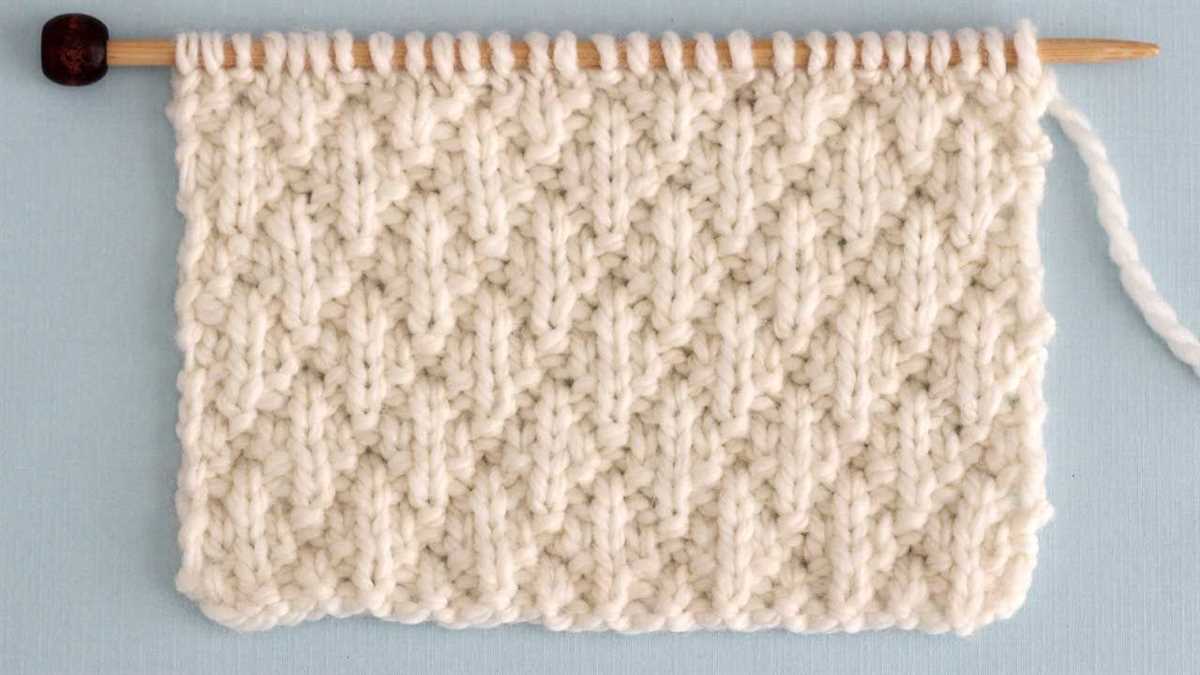
Knitting is a classic and versatile craft that allows you to create beautiful and cozy items, such as blankets. One of the most basic techniques in knitting is the knit and purl stitch. By combining these two stitches, you can create a variety of patterns and textures in your blanket.
Knit and purl blankets are perfect for both beginners and experienced knitters. For beginners, it’s a great way to practice the basic stitches and get comfortable with the knitting process. For experienced knitters, it offers an opportunity to experiment with different patterns and designs.
When it comes to knit and purl blanket patterns, the possibilities are endless. You can choose from simple patterns like the garter stitch or stockinette stitch, or you can get creative with more intricate patterns like cables or lace. The choice of yarn and color also plays a big role in the overall look of your blanket.
Whether you’re looking to make a warm and cozy blanket for yourself or a thoughtful gift for someone special, knit and purl blanket patterns are a great option. They offer a combination of beauty, functionality, and the satisfaction of creating something with your own two hands. So grab your knitting needles and get started on your next knitting project!
What are knit and purl blanket patterns?
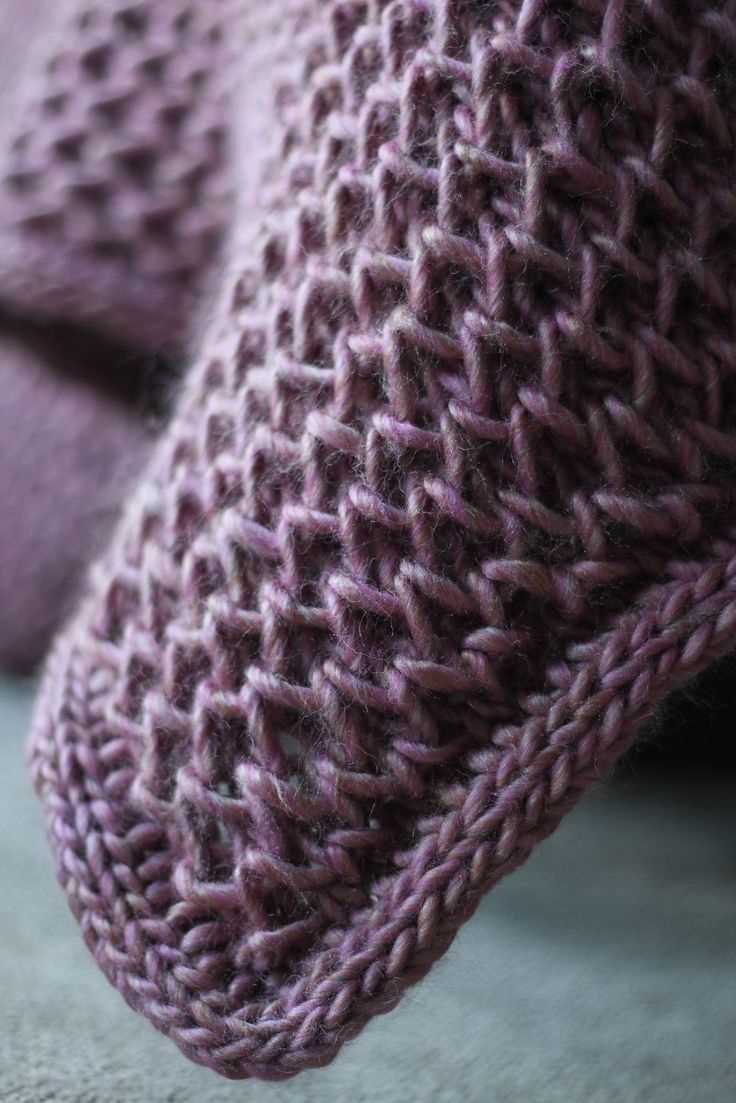
Knit and purl blanket patterns are a type of knitting pattern that involve using two basic stitches, the knit stitch and the purl stitch, to create a textured and visually interesting blanket. These patterns are popular among knitters of all levels, from beginners to more experienced knitters, as they can be relatively simple to follow and produce impressive results.
When following a knit and purl blanket pattern, knitters will typically alternate between knitting and purling stitches in specific patterns or sequences. This creates a combination of raised and flat areas on the fabric, resulting in an attractive design. The specific combination of knit and purl stitches can vary greatly depending on the pattern, allowing for endless creativity and customization.
Knit and purl blanket patterns can range from simple and repetitive designs, such as a basic garter stitch or stockinette stitch pattern, to more intricate and complex patterns that incorporate various textures and stitches. Some patterns may also include additional techniques, such as cabling or colorwork, to further enhance the design.
These patterns can be used to create blankets of all sizes, from small baby blankets to large throws, and can be customized to match any decor or personal style. Whether you’re looking for a quick and easy project or a challenging and rewarding endeavor, knit and purl blanket patterns offer a wide range of possibilities for knitters to explore and create beautiful, cozy blankets.
Why choose to knit and purl a blanket?
Knitting and purling a blanket is a popular choice for many reasons. Firstly, the knit and purl stitches create a beautiful texture that adds visual interest to the blanket. The alternating rows of knits and purls can create various patterns, such as ribbing or basketweave, which can make the blanket look more intricate and appealing.
Another reason to choose to knit and purl a blanket is the versatility it offers. With just these two basic stitches, you can create countless patterns and designs. Whether you prefer a simple and classic look or a more elaborate and intricate design, knitting and purling allow you to customize your blanket according to your taste and style.
Additionally, knitting and purling a blanket can be a meditative and relaxing activity. The repetitive motion of the stitches can help reduce stress and promote mindfulness. Many people find it therapeutic to spend time knitting, especially when working on a large project like a blanket. It can also be a great way to unwind and take a break from the busyness of daily life.
Moreover, knitting and purling a blanket gives you the satisfaction of creating something with your own hands. Handmade blankets are not only practical but also carry a sentimental value. They make thoughtful gifts for loved ones or cherished heirlooms to pass down through generations. Knitting a blanket allows you to put your time, effort, and love into every stitch, creating a meaningful and special item.
In conclusion, choosing to knit and purl a blanket offers a range of benefits. From the beautiful texture created by the knit and purl stitches to the versatility and customization options, knitting and purling a blanket can be a rewarding and enjoyable experience. Whether you are looking for a creative outlet, a stress-relieving activity, or a meaningful handmade gift, this knitting technique is a great choice.
How to choose the right yarn for your blanket
When it comes to knitting a blanket, choosing the right yarn is essential. The type of yarn you pick will not only determine the overall look and feel of the blanket, but also its durability and warmth. Here are a few factors to consider when selecting yarn for your knit and purl blanket pattern.
Fiber content:
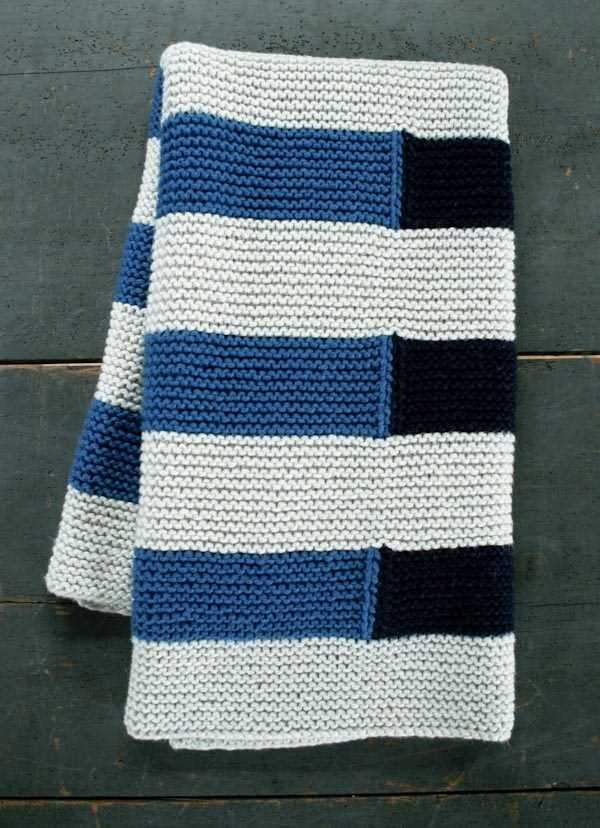
One of the most important considerations when choosing yarn for a blanket is its fiber content. Different fibers have different properties, and this will affect how the blanket feels and performs. For a cozy and warm blanket, natural fibers like wool or alpaca are great choices. If you prefer something softer and hypoallergenic, consider using yarn made from bamboo or cotton.
Weight:
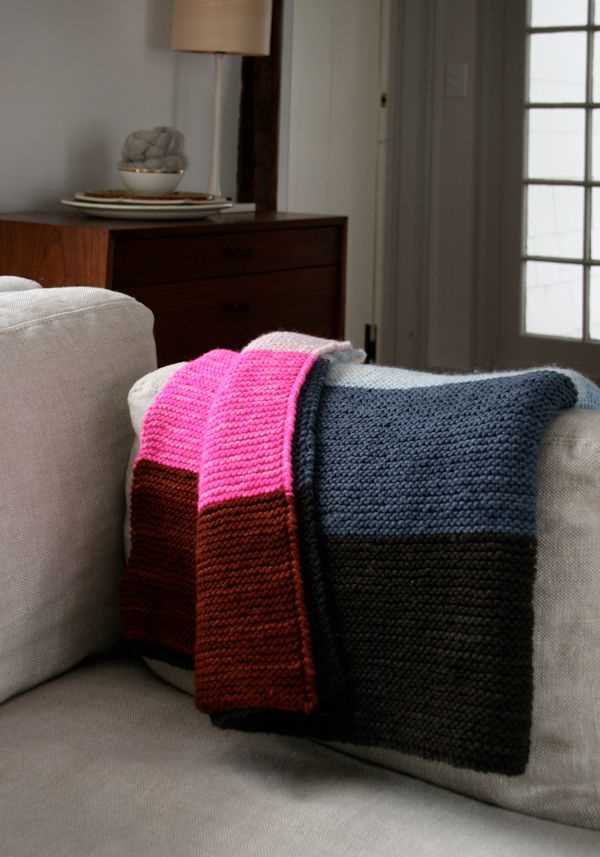
The weight of the yarn refers to its thickness and can greatly influence the outcome of your blanket. Bulky or chunky weight yarns are perfect for creating thick and warm blankets, while sport or fingering weight yarns create lighter and more delicate blankets. Consider the intended use of your blanket and the climate in which it will be used to determine the appropriate weight.
Texture and appearance:
- Smooth: Smooth yarns create a clean and polished look, perfect for showcasing intricate stitch patterns. They also provide great stitch definition.
- Fuzzy: Fuzzy or haloed yarns can add a cozy and soft texture to your blanket. However, they may not be suitable for stitch patterns that require crisp edges.
- Twisted or plied: Twisted or plied yarns are more durable and tend to have less stretch. They can withstand the weight of the blanket better and are less likely to pill.
Color:
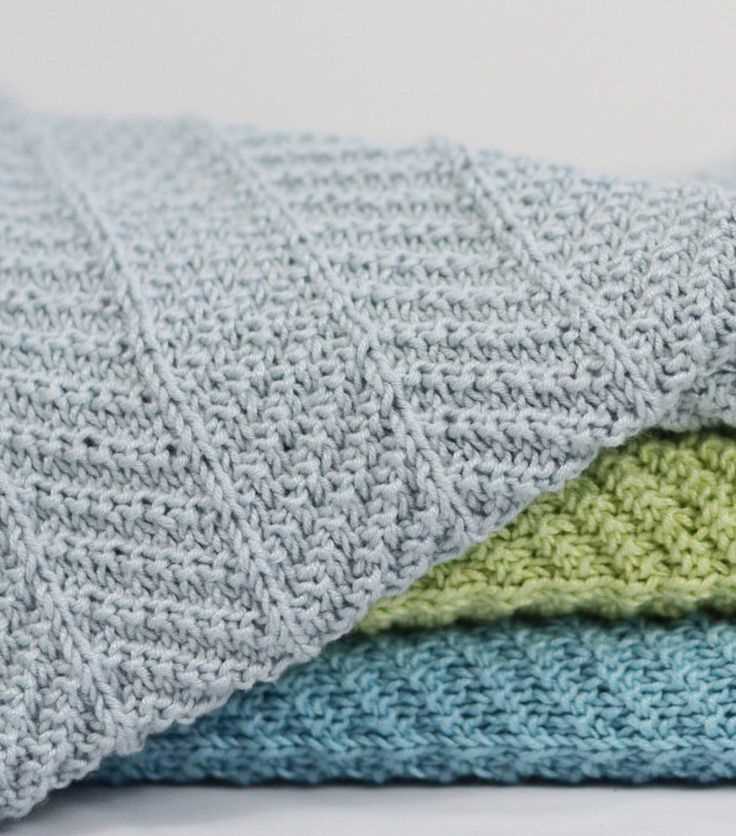
The color of the yarn will play a significant role in the overall look of your blanket. Consider the color scheme and aesthetic you want to achieve. Neutral and solid colors can create a timeless and elegant blanket, while variegated or self-striping yarns can add visual interest and vibrancy to your project.
By considering the fiber content, weight, texture, and color of the yarn, you can choose the perfect yarn for your knit and purl blanket pattern. Take your time to explore different options and consider the characteristics that are most important to you and the intended use of the blanket. With the right yarn, you’ll be able to create a beautiful and functional blanket that will be treasured for years to come.
Knitting Techniques for Beginners
Are you new to knitting and looking to learn some basic techniques? Knitting is a wonderful craft that allows you to create beautiful and functional items with just needles and yarn. Whether you’re interested in making scarves, blankets, or sweaters, learning a few essential techniques will set you on the path to becoming a skilled knitter.
Casting On: The first step in any knitting project is to cast on. This is the process of creating the foundation row of stitches on your needle. There are various methods of casting on, such as the long-tail cast-on or the knit cast-on. Choose a method that you feel comfortable with and practice until you can easily cast on the desired number of stitches.
Knit Stitch: The knit stitch is the most basic stitch in knitting. It creates a smooth and even fabric that is often used for the right side of a project. To knit, insert your right needle into the first stitch on your left needle from left to right, wrap the yarn around the right needle, and pull it through the stitch, sliding the old stitch off the left needle.
Purl Stitch: The purl stitch is the reverse of the knit stitch and creates a bumpy texture on the fabric. It is commonly used for the wrong side of a project or to create ribbing. To purl, insert your right needle into the first stitch on your left needle from right to left, wrap the yarn around the right needle, and pull it through the stitch, sliding the old stitch off the left needle.
Increasing and Decreasing: Once you have mastered the basic knit and purl stitches, you can learn how to increase and decrease stitches. Increasing adds stitches to your work, while decreasing removes stitches. There are various methods for these techniques, such as yarn overs for increasing and knit two together for decreasing. These techniques are essential for shaping your knitting projects.
Binding Off: At the end of your project, you will need to bind off to secure your stitches and create a finished edge. To bind off, knit the first two stitches, then use the left needle to lift the first stitch over the second stitch and off the right needle. Continue this process until only one stitch remains, then cut the yarn and pull it through the last stitch to secure it.
With these basic knitting techniques, you can start exploring various knitting patterns and create your own beautiful projects. Remember to practice regularly and don’t be afraid to make mistakes – knitting is all about learning and experimenting! Happy knitting!
Knit Stitch
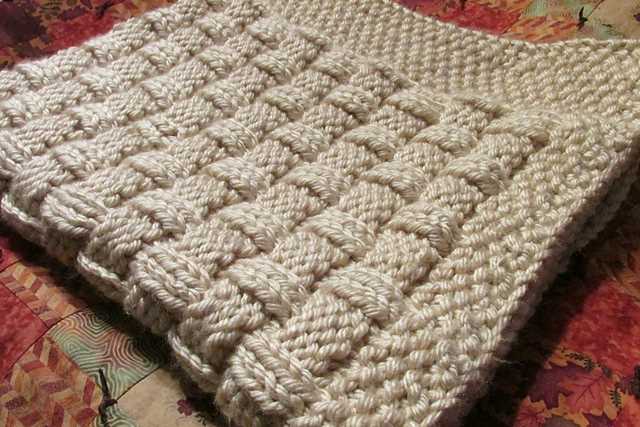
The knit stitch is one of the basic stitches in knitting and is commonly used to create a variety of patterns and designs. It is also known as the garter stitch and is often the first stitch new knitters learn. The knit stitch is created by inserting the right-hand needle into the front of a stitch on the left-hand needle, then wrapping the yarn around the right-hand needle and pulling it through the stitch. This creates a new stitch on the right-hand needle, while the old stitch remains on the left-hand needle.
The knit stitch creates a smooth, flat fabric with a slightly stretchy texture. It is reversible, meaning it looks the same on both sides of the work, making it ideal for reversible projects like scarves and blankets. The knit stitch can be used to create various patterns, such as stripes, cables, and lace designs. It can also be combined with other stitches, such as the purl stitch, to create different textures and patterns.
To knit the stitch, follow these steps:
- Hold the knitting needles with the yarn in the back of the work.
- Insert the right-hand needle into the front of the first stitch on the left-hand needle, from left to right.
- Wrap the yarn counterclockwise around the right-hand needle, crossing it over the left-hand needle.
- Pull the right-hand needle and yarn through the stitch, creating a new stitch on the right-hand needle.
- Slide the old stitch off the left-hand needle, leaving the new stitch on the right-hand needle.
- Repeat these steps for each stitch on the left-hand needle.
The knit stitch is a versatile stitch that forms the basis of many knitting projects. Whether you are a beginner or an experienced knitter, mastering the knit stitch is essential for creating beautiful and intricate designs.
Purl Stitch
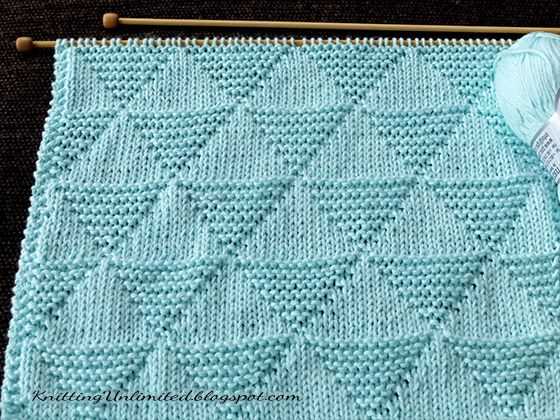
The purl stitch is one of the basic stitches used in knitting and is essential for creating a variety of different textures and patterns in your knitting projects. It is often used in combination with the knit stitch to create intricate designs, including the popular stockinette stitch.
To purl, insert the right-hand needle from right to left into the front of the stitch on the left-hand needle. The working yarn should be in front of the needles. Wrap the yarn counterclockwise around the right-hand needle, bringing it under and to the back of the right-hand needle. Use the right-hand needle to pull the yarn through the stitch, slipping the stitch off the left-hand needle.
The purl stitch creates a loop on the back side of the fabric, giving it a bumpy texture. When combined with the knit stitch, it creates a pleasing contrast of smooth and textured stitches. The purl stitch is often used to create ribs, seed stitch, and garter stitch, among other patterns. It can be worked on any type of knitting project, from scarves and sweaters to blankets and hats.
When following a knitting pattern, the purl stitch is typically indicated by a “P” or a “-“. For example, if a pattern instructs you to “K2, P2” it means to knit two stitches, then purl two stitches, and repeat this pattern across the row.
The purl stitch is an essential skill for knitters of all levels. Once you master this stitch, you’ll be able to create a wide range of beautiful and intricate patterns in your knitting projects.
Intermediate knitting techniques
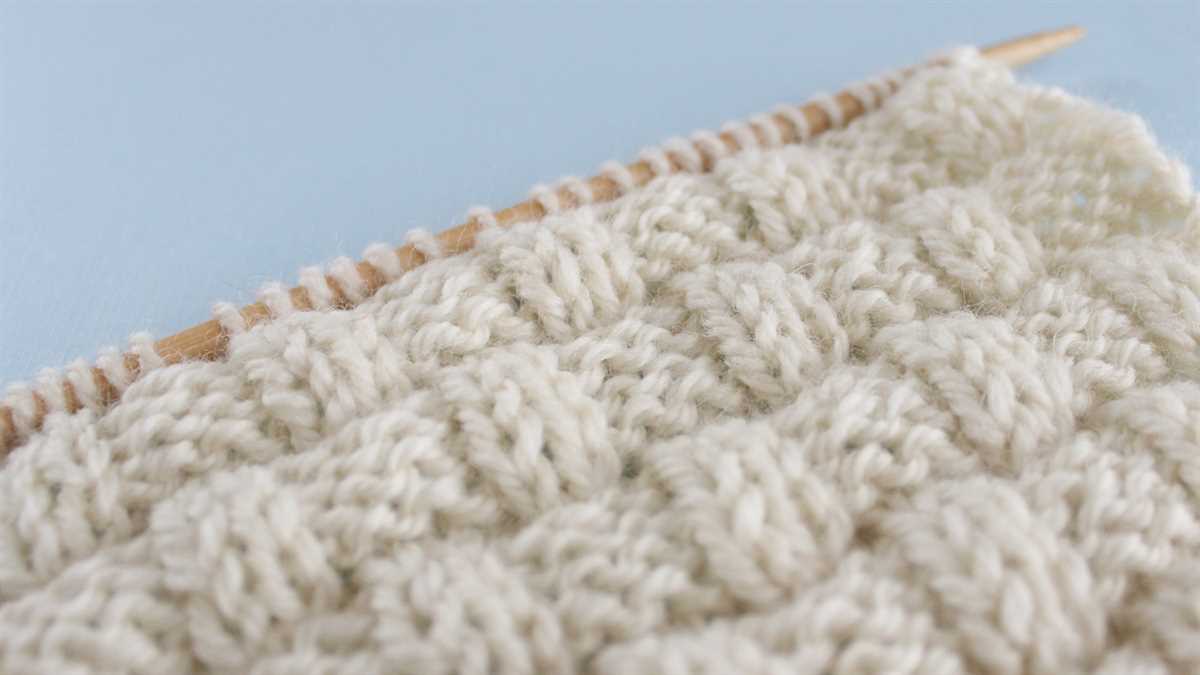
Once you have mastered the basic knit and purl stitches, you may be ready to explore some intermediate knitting techniques. These techniques can add texture, interest, and complexity to your knitting projects, allowing you to create unique and beautiful designs. Here are a few intermediate knitting techniques to try:
Cable Knitting
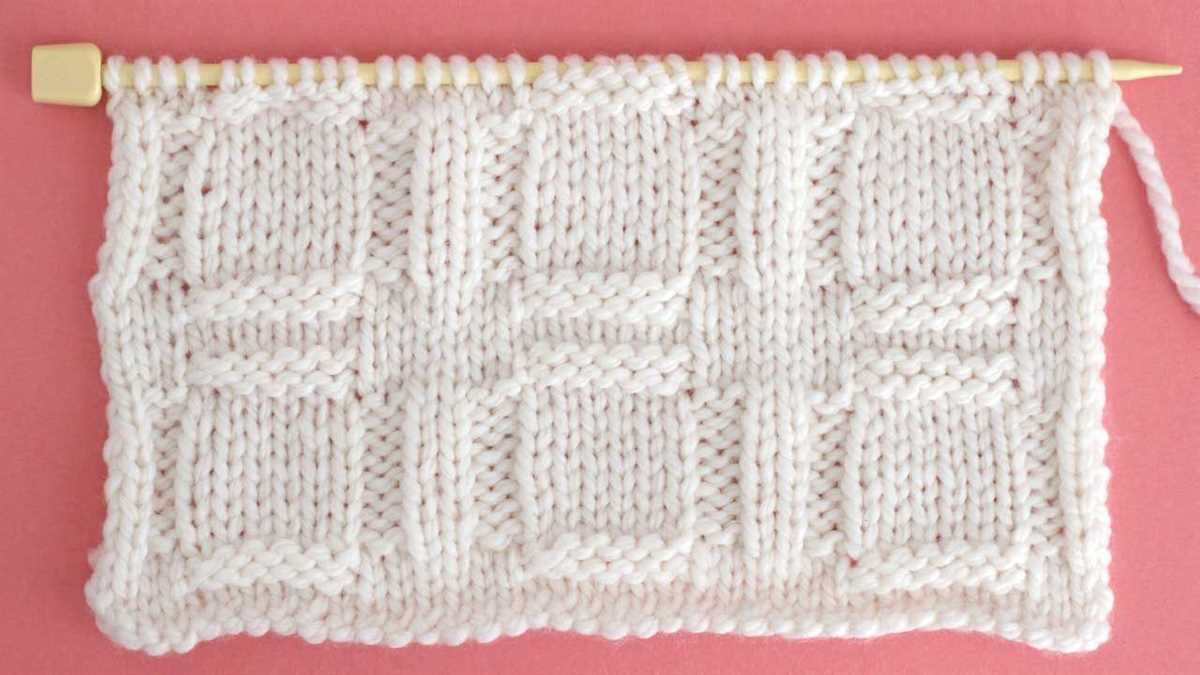
- Cabling: Cables are created by crossing stitches over each other, resulting in a twisted or braided look. This technique is used to create intricate and decorative patterns, such as cables in traditional Aran sweaters.
- Cable without a cable needle: This technique allows you to create cables without the need for a cable needle. By using your knitting needles and manipulating your stitches, you can cross stitches over each other without the need for an additional tool.
Lace Knitting
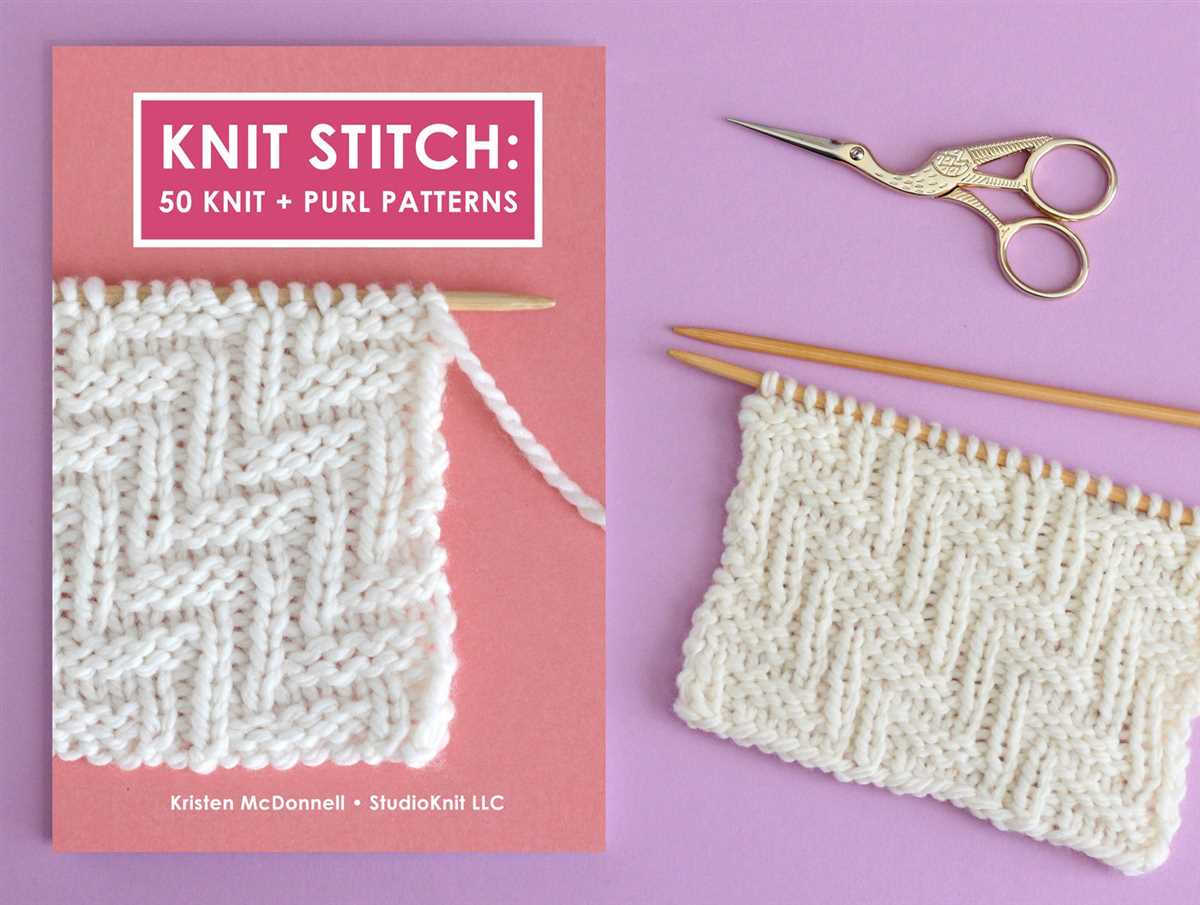
- Lace patterns: Lace knitting involves creating delicate and openwork patterns with yarn overs and decreases. These patterns often feature intricate motifs, such as flowers, leaves, or geometric shapes. Lace knitting can be used to add elegance and sophistication to your knitting projects.
- Provisional cast on: The provisional cast on is a temporary cast on method used in lace knitting to allow for the project to start from the middle, or to add a decorative border later on. This technique is achieved by casting on stitches onto a waste yarn that can be easily removed later.
Colorwork Knitting
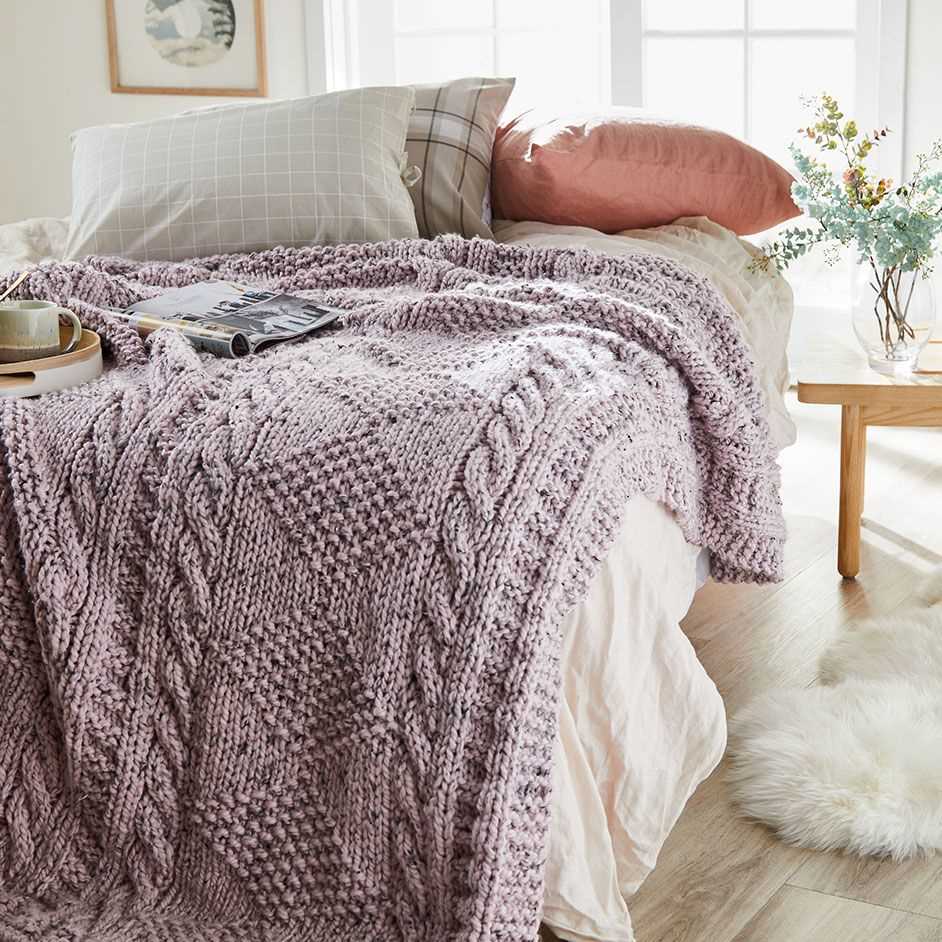
- Fair Isle knitting: Fair Isle knitting is a traditional colorwork technique that involves using multiple colors of yarn in a single row to create intricate and colorful patterns. This technique requires the ability to carry multiple yarn strands along the back of your work.
- Intarsia knitting: Intarsia is a colorwork technique that involves knitting with different colors in distinct blocks or areas. Unlike Fair Isle knitting, where the color changes happen within a row, intarsia involves joining new yarn for each color section and twisting the yarns at the color change to avoid holes in the fabric.
With these intermediate knitting techniques, you can take your knitting skills to the next level and create beautiful and intricate designs. Whether you’re interested in cables, lace, or colorwork, there are endless possibilities for exploring and expanding your knitting repertoire.
Seed Stitch
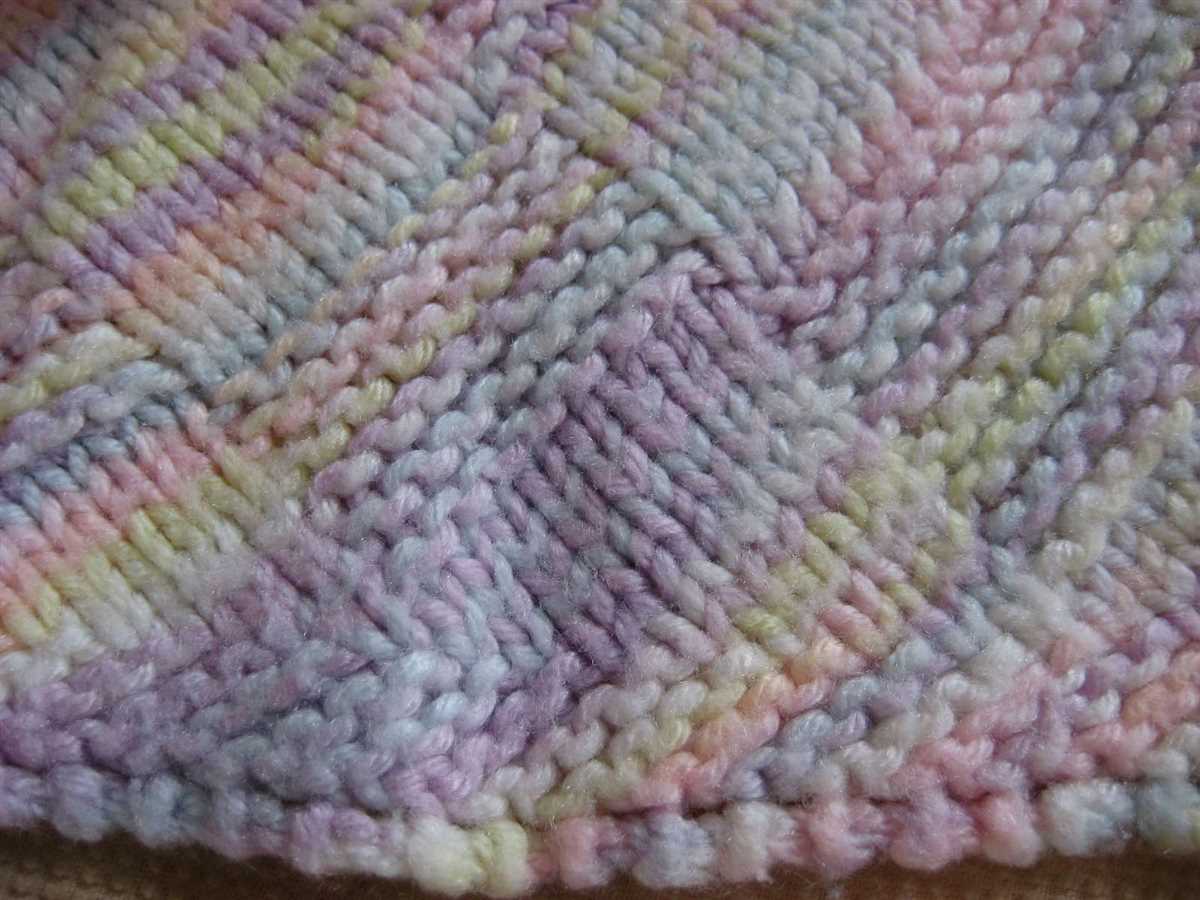
The seed stitch is a popular knitting pattern that uses a combination of knit and purl stitches to create a textured fabric. It is also known as the moss stitch or the British seed stitch. This pattern is great for creating blankets as it adds visual interest and dimension to the finished product.
To create the seed stitch pattern, you will need to alternate between knitting and purling stitches in a specific sequence. The basic sequence is to knit one stitch, then purl one stitch, and repeat this pattern across the row. On the next row, you will reverse the sequence, starting with a purl stitch and then knitting the next stitch. This creates a pattern of raised bumps alternating with flat V-shaped stitches.
The seed stitch is loved for its simplicity and versatility. It works well with various yarn weights and can be easily modified to create different effects. You can use the seed stitch to create blankets with a uniform textured look, or you can combine it with other stitch patterns to create unique designs. Additionally, the seed stitch is reversible, making it suitable for items like scarves and shawls that will be seen from both sides.
If you are looking for a knit and purl blanket pattern, the seed stitch is a great option to consider. Its textured appearance adds interest to the blanket, while the repetitive nature of the pattern makes it easy to memorize and work on. Whether you are a beginner or an experienced knitter, the seed stitch offers a satisfying knitting experience and a beautiful finished product.
Rib stitch
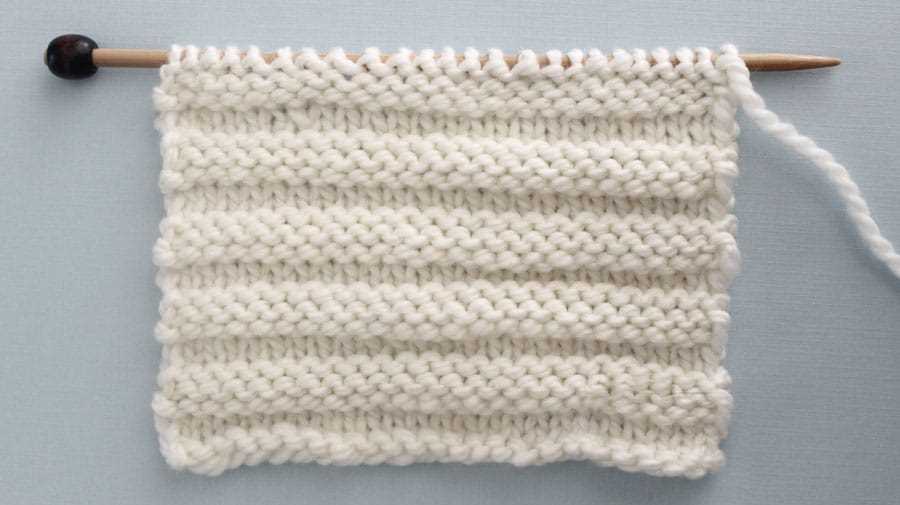
The rib stitch is a popular knitting pattern that creates a textured fabric with raised vertical columns. It is created by alternating knit stitches and purl stitches in a specific sequence. The rib stitch is commonly used for creating ribbed cuffs, hems, and collars on garments, as well as for making scarves, socks, and blankets.
To create the rib stitch, you need to work with an even number of stitches. The most common rib stitch pattern is the 1×1 rib, which alternates between one knit stitch and one purl stitch. This creates a fabric with a stretchy, ribbed texture.
The rib stitch can be used to add both visual interest and functional properties to your knitting projects. The vertical columns created by the rib stitch can give your finished piece a structured look, while also allowing the fabric to stretch and conform to the wearer’s body. Additionally, the rib stitch is often used for creating reversible patterns, as the texture looks the same on both sides of the fabric.
There are many variations of the rib stitch, including the 2×2 rib, 3×3 rib, and seed stitch rib. Each variation creates a different pattern and texture, allowing you to experiment and customize your knitting projects. Whether you’re a beginner or an experienced knitter, the rib stitch is a versatile and timeless pattern that can be incorporated into a wide range of knitting projects. Try using it in your next blanket pattern to add a touch of texture and style!
Advanced knitting techniques for experienced knitters
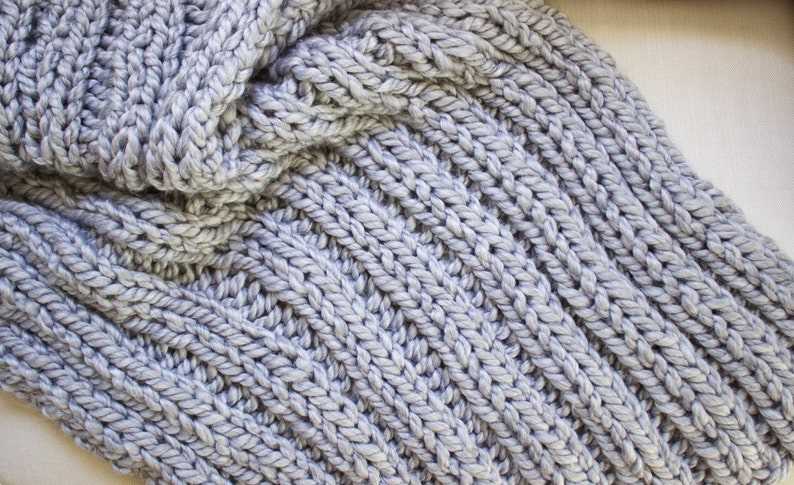
Experienced knitters who have mastered the basics of knitting are often looking for new challenges and advanced techniques to enhance their skills. These techniques allow experienced knitters to create more intricate and complex patterns, elevating their knitting projects to a whole new level.
One advanced knitting technique is lace knitting. Lace knitting involves creating intricate patterns and designs using a combination of knit and purl stitches, as well as yarn overs and decreases. This technique requires careful attention to detail and precision, as even a small mistake can easily be noticed in lace patterns. However, the end result is stunningly beautiful and delicate lacework that can be incorporated into shawls, scarves, or even clothing.
Here are some other advanced knitting techniques:
- Cable knitting: This technique involves crossing stitches over each other to create textured cables. Cables can be used to add depth and interest to various knitting projects, such as sweaters, hats, or blankets.
- Fair Isle knitting: Also known as stranded knitting, Fair Isle involves knitting with two or more colors at the same time to create intricate colorwork patterns. This technique requires a combination of tension control and chart reading skills.
- Intarsia knitting: Intarsia allows you to knit with multiple colors while working on separate sections or blocks of color. This technique is commonly used in creating pictorial designs or geometric patterns.
- Entrelac knitting: Entrelac creates a basketweave-like appearance by knitting small squares or diamonds in a specific pattern. This technique can be used to create beautiful textured fabrics, such as scarves or blankets.
- Double knitting: Double knitting involves creating a reversible fabric with two distinct layers. This technique is great for creating two-color patterns and can be used to make cozy and warm accessories or garments.
These advanced knitting techniques require practice, patience, and an understanding of the knitting mechanics. However, they can be incredibly rewarding for experienced knitters looking to expand their skills and create unique and intricate projects.
Cable Stitch
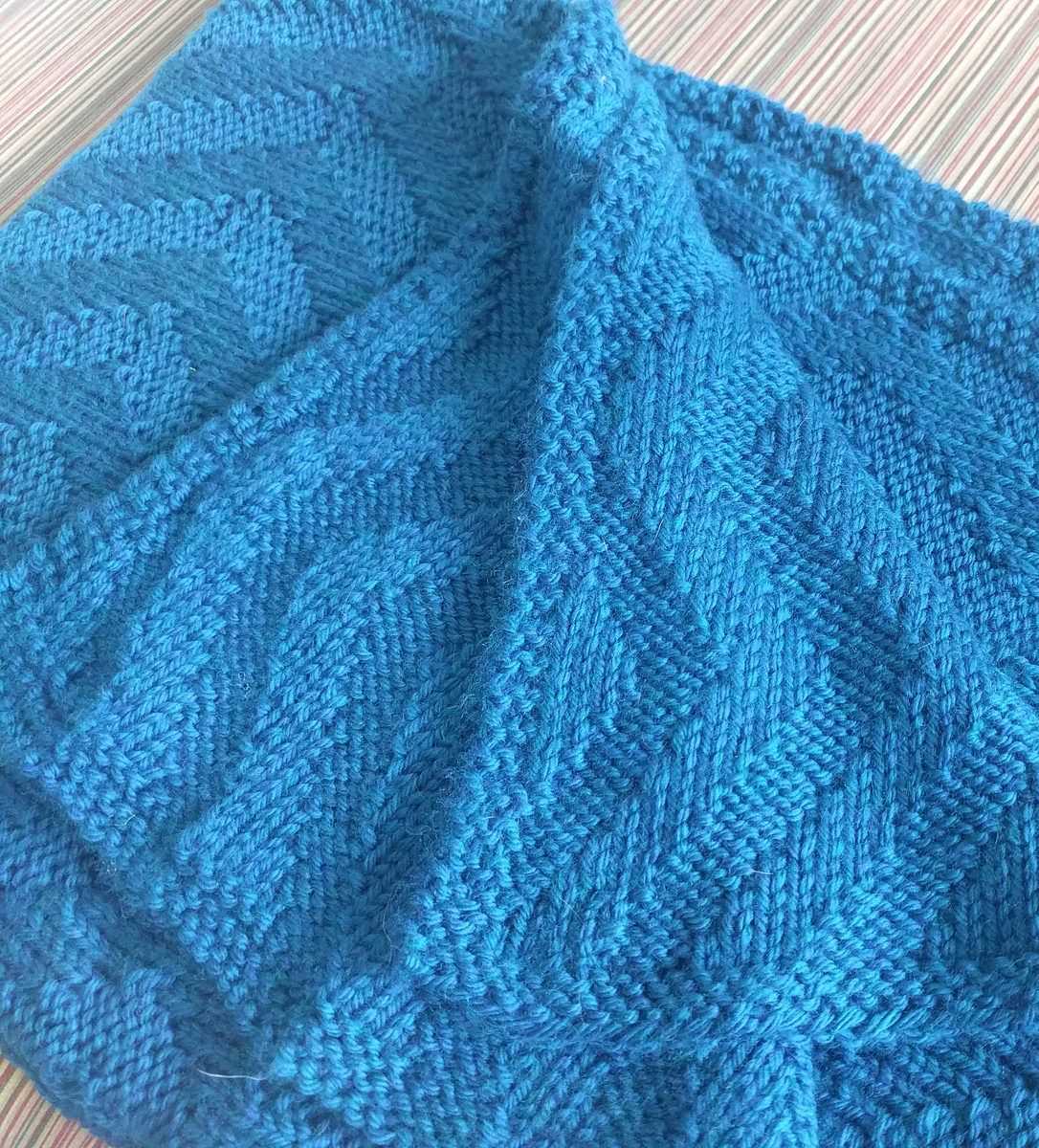
The cable stitch is a popular knitting technique that creates stunning textured patterns on blankets, sweaters, and other knitted items. It involves crossing stitches over one another to create a braided or twisted effect. The cable stitch adds depth and interest to any knitting project and can be easily incorporated into a blanket pattern.
To create a cable stitch, you will need a cable needle or double-pointed needle. Start by knitting a few rows in your chosen stitch pattern, such as seed stitch or ribbing. Then, when you reach the designated cable row, you will need to rearrange your stitches on the cable needle.
Take the cable needle and slip the appropriate number of stitches onto it, leaving them in the front or back of your work. Hold the cable needle to the front or back of your knitting, depending on the desired cable direction. Then, knit the same number of stitches from your main needle before returning to the stitches on the cable needle. Knit these stitches, and your cable stitch is complete.
The cable stitch can be used in various ways to create different patterns and textures on your blanket. You can create simple one or two-stitch cables for a subtle effect, or more intricate cables with multiple crosses for a bold and eye-catching design. Experiment with different cable stitch patterns and combinations to find the perfect pattern for your knit and purl blanket.
Lace Stitch
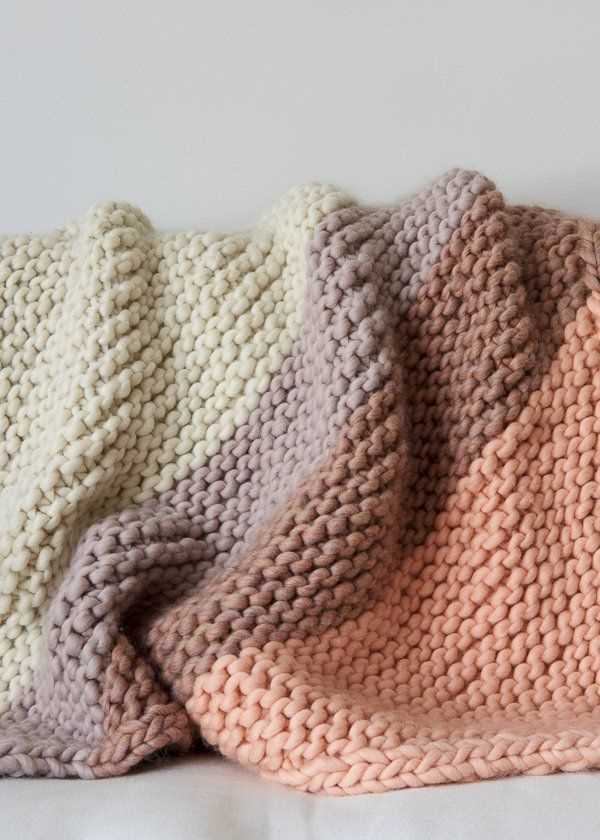
The lace stitch is a beautiful and intricate pattern that adds elegance and sophistication to any knitted piece. It is characterized by its openwork design, created by a combination of yarn overs and decreases. The result is a delicate and airy fabric that is perfect for lightweight garments, shawls, and blankets.
To create the lace stitch, you will need to have a basic understanding of knit and purl stitches, as well as yarn overs and decreases. Yarn overs are made by simply wrapping the yarn around the needle, creating an extra loop. Decreases are made by knitting or purling stitches together, reducing the number of stitches on the needle. These simple techniques are the building blocks of lace knitting.
There are countless variations of lace stitch patterns, ranging from simple eyelet motifs to complex floral designs. Some popular lace stitch patterns include the feather and fan, diamond lace, and leaf lace. Each pattern creates a unique texture and visual interest, making the finished piece truly one-of-a-kind.
When working with lace stitches, it is important to maintain an even tension and use a yarn that has good stitch definition. Lace stitches are often worked with fine yarns and small needles, resulting in a delicate fabric with intricate details. It is also recommended to use lifelines when knitting lace, which are threads inserted into the stitches to serve as a reference point in case of mistakes or unraveled stitches.
Whether you are an experienced lace knitter or just starting out, the lace stitch offers endless possibilities for creativity and artistic expression. With its delicate and intricate patterns, lace knitting is a timeless technique that adds beauty and charm to any project.
Choosing a knit and purl blanket pattern
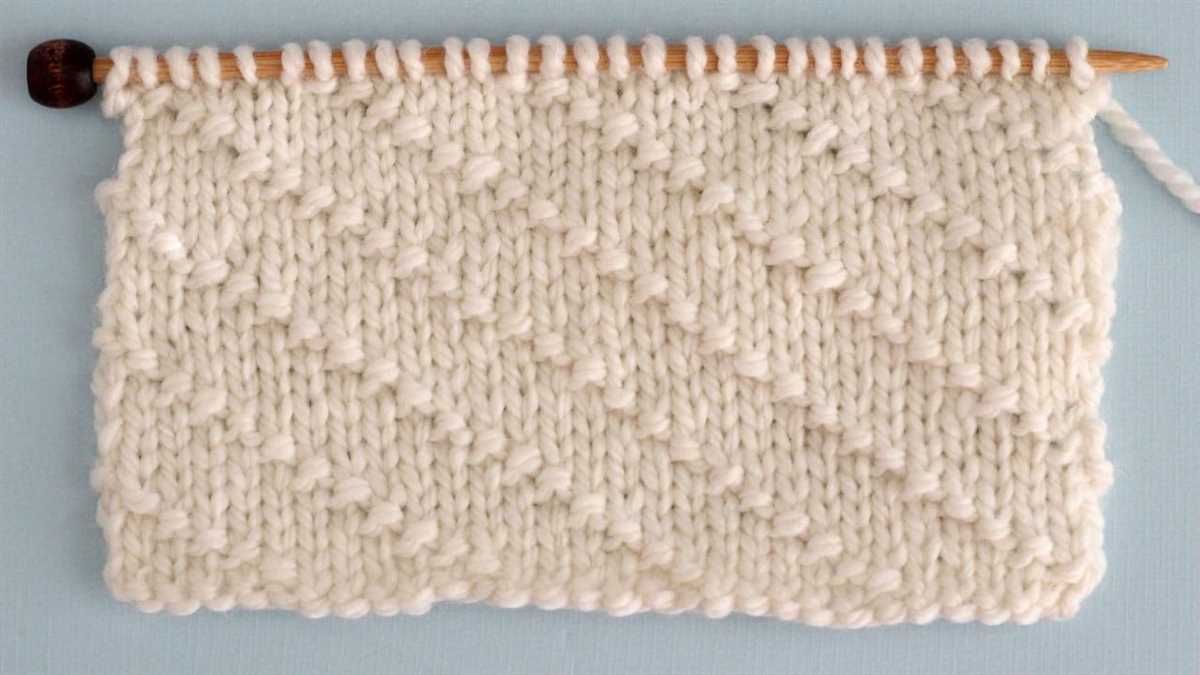
When it comes to choosing a knit and purl blanket pattern, there are several factors to consider. Whether you are a beginner or an experienced knitter, finding the right pattern can make all the difference in creating a beautiful and satisfying project.
First and foremost, consider your skill level. If you are new to knitting or still developing your skills, it may be best to choose a pattern that is labeled as “easy” or “beginner-friendly.” These patterns will typically have simpler stitch patterns and fewer color changes, making them more accessible and easier to complete.
On the other hand, if you are an experienced knitter looking for a challenge or want to try something more intricate, you may want to opt for a pattern that involves more complex stitch patterns or incorporates multiple colors. These patterns can be a fun way to expand your skills and create a truly unique and eye-catching blanket.
Another important factor to consider is the size and type of blanket you want to create. Blanket patterns can range from baby blankets to large throws, each requiring different amounts of yarn and level of time commitment. Consider who the blanket is for and how it will be used to determine the appropriate size and style.
Additionally, take into account the materials and tools you have on hand. Some patterns may require specific types of yarn or needle sizes, so make sure you have the necessary supplies before starting your project. If you already have a particular yarn in mind or want to use up some existing yarn from your stash, look for patterns that are compatible with the yarn weight and fiber content you have.
Lastly, don’t be afraid to explore different sources for patterns. There are countless websites, books, and knitting communities that offer a wide variety of knit and purl blanket patterns. Spend some time browsing through different options and choose a pattern that resonates with your personal style and preferences.
In conclusion, choosing a knit and purl blanket pattern involves considering your skill level, the size and type of blanket you want to create, the materials and tools you have on hand, and exploring different sources for patterns. By taking these factors into account, you can find the perfect pattern for your next knitting project and create a beautiful and unique blanket that will be cherished for years to come.
Q&A:
What is a knit and purl blanket pattern?
A knit and purl blanket pattern is a knitting pattern that uses a combination of knit and purl stitches to create a textured pattern on a blanket.
Are knit and purl blanket patterns suitable for beginners?
Yes, knit and purl blanket patterns are great for beginners as they only require knowledge of two basic stitches – knit and purl. With some practice, beginners can easily create beautiful blankets using these patterns.
What are some popular knit and purl blanket patterns?
Some popular knit and purl blanket patterns include the seed stitch blanket, basketweave blanket, and moss stitch blanket. These patterns are loved for their simplicity and versatility.
Can you knit and purl in the same row?
Yes, you can knit and purl in the same row. This is known as a combination stitch or a mixed stitch. It is often used to create different patterns and textures in knitting.
What are some tips for knitting a knit and purl blanket pattern?
Some tips for knitting a knit and purl blanket pattern include using stitch markers to keep track of pattern repeats, checking your gauge before starting to ensure the right size, and using a stitch holder or safety pin to secure your work when not knitting.
What are some easy knit and purl blanket patterns for beginners?
Some easy knit and purl blanket patterns for beginners include the garter stitch blanket, the seed stitch blanket, and the ribbed blanket. These patterns involve only knit and purl stitches, making them great for beginners who are just starting out with knitting.
Can you recommend any advanced knit and purl blanket patterns?
Yes, there are many advanced knit and purl blanket patterns available for experienced knitters. Some popular advanced patterns include the cable knit blanket, the lace knit blanket, and the mosaic knit blanket. These patterns often involve more intricate stitch patterns and techniques, providing a challenge for experienced knitters.